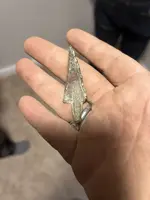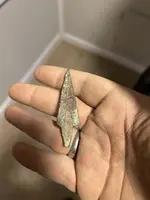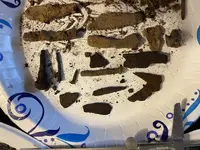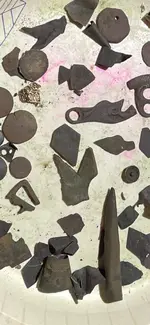I'm leaning towards identifying this as an early 1800s trade-era copper point. It's on the larger side, and while most were not finished with serrations, some were. These points come in all shapes and sizes, down to small bird points. I've even found some copper and iron points with throwback styles that resemble Clovis and Dalton period points.
Obviously, I can't say for certain, as it's quite raw. However, I assume your point is made from European scrap copper but was likely manufactured by a local Native American in your area. Native Americans became quite skilled at working with metal, typically using parts from pots, broken gun pieces and any other metal scrap.
One of the most overlooked trade goods at the time was chisels and files. As you can see, they probably used a chisel, since the left blade appears to have been lined up several times to create that edge. Typically, they would eventually finish the piece with abrasion stones, giving it a less raw appearance. Your example would have been finished with serrations on both sides.
I have found a decent amount of metal points unfinished, I imagine they would bounce off while trying to strike them, holding a hammer or trade ax in one hand and lining up the chisel in the other.
Ive attach a few pics of the reverse. I wonder how many detectorists find the reverse punch of these points and not realize what they have. Note the file marks on the V shaped items








